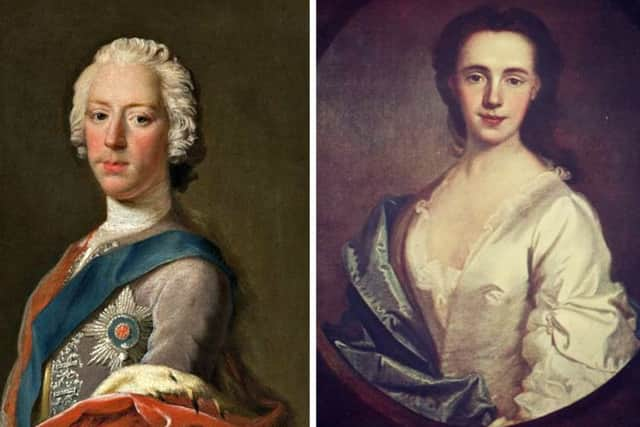The failed plot to seize Bonnie Prince Charlie
and live on Freeview channel 276
Charles Edward Stuart arrived at Moy Hall, the home of Lady Anne Mackintosh, a staunch Jacobite supporter, on February 16 1746 to rest for a few days while his widely scattered troops gathered again.
His plan was then to attack John Campbell, 4th Lord Loudon, who was posted at Inverness with 2,000 government soldiers but after the army officer was alerted to the Prince’s arrival at Moy, a plan was quickly mounted to seize him.


Advertisement
Hide AdAdvertisement
Hide AdIn truth, only around 40 to 50 men accompanied the Prince and what was to follow became known as the Rout of Moy.
Lord Loudon, who had surrounded Inverness with government troops to prevent anyone from leaving, marched towards Moy around 11pm with 1,500 soldiers. While the advance was made, Charles Edward Stuart slept in his bed.
There are several theories as to who leaked the information. One claims that, a young girl, aged 13 or 14, overheard Red Coats discussing the planned capture as she served them beer at a tavern in the Highland capital.


Despite the security around the town, she fled down the road to Moy, without shoes or socks, to alert Lady Anne.
Advertisement
Hide AdAdvertisement
Hide AdAnother theory claims that Lady Anne’s mother, who lived in Inverness, sent a boy of 15 to circumnavigate Loudon’s men to raise the alarm at Moy.
“The prince, who was in bed, was instantly awakened and, jumping out of bed, put on his clothes, left the house with a guard of about 30 men, and disappeared into a neighbouring wood,” according to James Browne’s 1852 History of the Highlands.
The blacksmith was dispatched by Lady Anne, along with five or six men, to deal with the approaching forces.
Browne said: “This man, with a boldness almost incredible, formed the extraordinary design of surprising the advancing party, in the expectation that they would fall prey to a panic.”
Advertisement
Hide AdAdvertisement
Hide AdFraser’s men were lined up on each side of the road around three miles from Moy and told not to shoot until ordered to do so with a specific sequence then to be followed.
On hearing the soldiers, Fraser shouted: “Here come the villains, who intend carrying off our Prince; fire my lads, do not spare them; give them no quarter.”
On Fraser’s command, each man shot their pistols and ran in different directions shouting orders and the names of some of the most prominent Jacobite figures, including Lochiel and Keppoch, and their clans.
“Impressed with the belief that the whole Highland army was at hand, the advanced guard instantly turned its back, and communicating its fears to the rear, a scene of indescribable confusion ensured,” Browne wrote.
Advertisement
Hide AdAdvertisement
Hide AdHe said: “In the hurry of their flight many were thrown down and trod upon.”
“In this affair the laird ot Macleod’s pipers, reputed the best in Scotland, was shot dead on the spot. On the dispersion of Lord Loudon’s party, Charles returned to the castle.”
It is though that Lady Mackintosh ordered the rout without the knowledge of the Prince who was later sent a message to return to Moy once the coast was clear.
Within days, Jacobite forces marched to Inverness before taking possession of the old Fort George, now the site of Inverness Castle.
